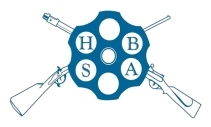PPSh-41 7.62mmTokarev sub machine gun
posted 10 November 2021, 11:36 pm
| 01. Original name | PPSh-41 pistolet-pulemyot Shpagina; Russian: Пистолет-пулемёт Шпагина; “Shpagin machine pistol” | |
| 02. Other official names | Type 50, Type 49, K-50M, MP41(r), MP717(r), M-49, PPS-50, VPO-135, LTD PPSh-41, SKL-41, IO SR-41, Šokac | |
| 03. Popular names | papasha (Russian: папаша), meaning daddy and pe-pe-sha” (Russian: ППШ) | |
| 04. Chamberings | 7.62×25mm Tokarev | |
| 05. Designed by | Georgy Shpagin | |
| 06. Design date | 1941 | |
| 07. In service date(s) | 1941 -1960s USSR, 1941 – present other countries | |
| 08. Adopted by | Albania, Angola, North Korea, Syria, Afghanistan, Austria, Bulgaria, Croatia, Cuba, China Czechoslovakia, East Germany, Estonian partisans, Finland, Georgia, Guinea, Guinea Bissau, Hungary, Iraq, Indonesia, Iran, Laos, Lebanese National Movement, Lesotho, Mongolia, Nazi Germany, Poland, Romania, Sierra Leone, Somalia, South Korea, Soviet Union, North Vietnam, Yugoslavia, Tanzania, Zimbabwe | |
| 09. Production quantities | over 5,000,000 | |
| 10. Mechanism | Blowback, open bolt | |
| 11. Weight | 3.63 kg (8.0 lb) (without magazine) | |
| 12. Mountings | Sling, round drum mag, box mag | |
| 13. Practicality in action | The drum magazine holds 71 rounds. In practice, misfeeding is likely to occur with more than about 65. In addition to feed issues, the drum magazine is slower and more complicated to load with ammunition than the later 35-round box magazine that increasingly supplemented the drum after 1942. While holding fewer rounds, the box magazine does have the advantage of providing a superior hold for the supporting hand. Although the PPSh is equipped with a sliding bolt safety, the weapon’s open-bolt design still presents a risk of accidental discharge if the gun is dropped on a hard surface | |
| 14. Comments / Other information | The impetus for the development of the PPSh came partly from the Winter War against Finland, where the Finnish Army employed the Suomi KP/-31 submachine gun as a highly effective tool for close-quarter fighting in forests and built-up urban areas. A submachine gun, the PPD-40, was subsequently rushed into mass production in 1940, but it was expensive to manufacture, both in terms of materials and labor, because it used numerous milled metal parts, particularly its receiver. Shpagin’s main idea for cost reduction was to use metal stamping for the production of most parts; that concept was revolutionary in the Soviet Union at the time. Shpagin created a prototype PPSh in September 1940, which also featured a simple gas compensator designed to prevent the muzzle from rising during bursts; this improved shot grouping by about 70% relative to the PPD.. PPSh-41 7.62mm Sub Machine Gun (USSR) (WW2) Introduced in 1942, designed by G.S. Shpagin: chambered for the 7.62mm Tokarev round; uses 71-round drum magazine and 35-round box magazine; cyclic rate about 900rpm; weight without magazine 8lb. A conventional, but very successful, sub machine gun – WW2 production reputedly exceeded 5 million. |
